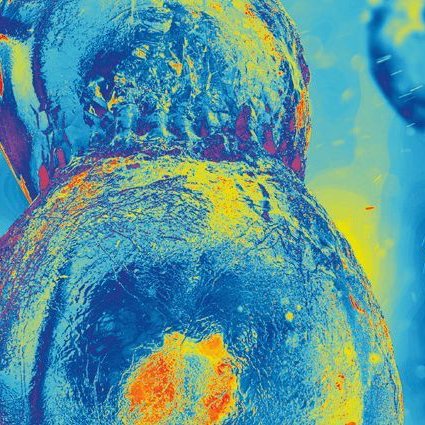
Savitski Lab
@savitski_lab
Followers
2K
Following
245
Media
46
Statuses
239
We are the Savitski lab located @embl using and developing stability proteomics methods for assessing the state of the proteome. Migrated to @ savitski-lab.bsky
Joined April 2018
HT-PELSA, a new proteomics tool by EMBL researchers, processes samples 100x faster and works directly with complex crude cell, tissue, and bacterial lysates – developments which could accelerate basic biological research and drug discovery 💊 🔗 https://t.co/gtJZJt9EoR
0
6
10
Happy to see our HT-PELSA paper now published in @NatureSMB 🎊Big thanks for the constructive review process! 📖Read the manuscript here ( https://t.co/Ehen3vkW51...) & check the thread for additional information ⬇️
Want to know how the ligands interact with proteins beyond model human cell lines? Interested in membrane targets? Check out our High-Throughput PELSA method which allows you do all these cool screenings for dozens of ligands within 2 hours!
0
0
5
All data can be interactively explored https://t.co/afxgVAtnt2; This work was led by Kejia Li @KeJia93_Li and Clément Potel, with invaluable contributions from Isabelle Becher, Nico Hüttmann @NicoHuettmann, Martín Garrido-Rodríguez @martingarridorc, and Jennifer Schwarz.
0
1
5
3/3 We extended its application to crude human cell line, bacteria, and tissue and sensitively identify membrane targets! It works extremely well in tissues, which allowed us to identify sunitinib off-targets in mouse heart tissue, and could explain its cardiotoxicity.
1
0
4
2/3 We provide a large collection of ATP-binding proteins in E.coli and give rich information on how they respond to ATP. Our data nicely showed how chaperon protein DnaK binds ATP at ATP-binding site at low ATP concentration and dissociates its substrate protein at high conc.
1
0
4
1/3 We extended the original PELSA to work with 96-well plates and show a 100-fold higher throughput, excellent reproducibility, accurate determination of drug-binding affinities in dose-response experiments as shown by a strong correlation of 0.88 with kinobeads measurements.
1
0
4
1/3 We extended the original PELSA to work with 96-well plates and show a 100-fold higher throughput, excellent reproducibility, accurate determination of drug-binding affinities in dose-response experiments as shown by a strong correlation of 0.88 with kinobeads measurements.
1
1
12
Want to know how the ligands interact with proteins beyond model human cell lines? Interested in membrane targets? Check out our High-Throughput PELSA method which allows you do all these cool screenings for dozens of ligands within 2 hours!
biorxiv.org
Systematic mapping of protein-ligand interactions is essential for understanding biological processes and drug mechanisms. Peptide-centric local stability assay (PELSA) is a powerful tool for...
1
16
40
All data can be interactively explored 🖥️ https://t.co/HEeQVq4UIh. This work was led by Clement Potel, @ https://t.co/wy2qddu82V and @ https://t.co/FcbzPZ1k7o . We thank our great collaborators @ https://t.co/qqrvYwuC0h and @ https://t.co/tzWGTkQKQE.
0
0
0
Finally, we once again uncovered site-specific modulation of glycosylation upon perturbation, meaning that only some glycoforms on some glycosites are modulated, even within the same protein, suggesting complex regulatory mechanisms.
1
0
0
We showed remodeling of the mouse brain glycoproteome upon gut microbiome colonization 🐭 The link b/w gut microbiome & brain physiology is long known, but molecular mechanisms remain elusive. We showed that proteins involved in neurotransmission & axon guidance were affected.
1
0
0
We next used our quantitative approach to measure the dynamics of glycosylation changes in human cells treated with a fucosylation inhibitor 🧫 We discovered pervasive site-specific modulation of glycosylation upon perturbation.
1
0
0
Very little is known about glycoform functionality. We developed a functional glycoproteomics approach enabling the proteome-wide characterization of the solubility of different glycosylated proteoforms in the mouse brain 🐭
1
0
0
To understand structural features governing the level of site microheterogeneity, we leveraged our comprehensive dataset in combination with AlphaFold DB 🖥️
1
0
0
It is essential to differentiate surface-exposed glycoforms from intermediate species. To address this, we treated intact living human cells with two enzymes, enabling proteome-wide characterization of mature glycoforms 🧫
1
0
0
Using our quant approach, we discovered that many sites have similar glycosylation patterns across tissues 🐭We identified sites driving tissue-specificity, enriched in domains involved in cell adhesion, signaling & immunity. E.g., only N445 exhibits tissue specificity on INSR.
1
0
0
We are very happy to present our work on N-glycoproteomics!🍬 Our method enables the selective enrichment and precise quantification of intact N-glycopeptides to explore the dynamics of glycosylation microheterogeneity. https://t.co/KrumrYP7m0
2
5
12
Exciting opening at the proteomics core facility at EMBL! Please spread, apply and reach out!
0
10
15
1/11 - With @KMitosch and Clément Potel + colleagues in @savitski_lab @TypasLab @embl, I’m very happy to share our discovery of a hyper-promiscuous phage protein kinase (T7K) which broadly deactivates bacterial defenses! https://t.co/Yjqtwof1um
4
32
103



